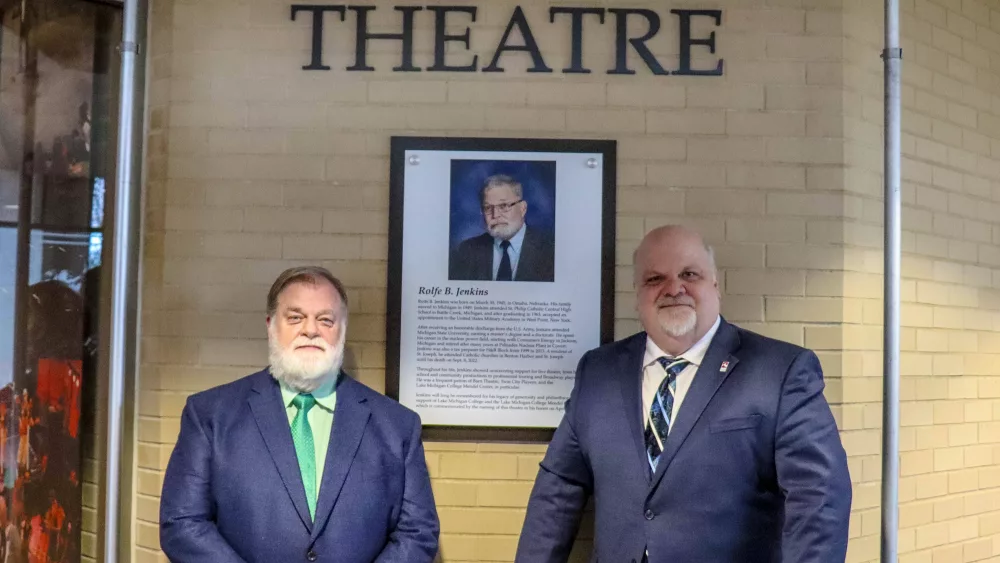One of the next phases of the Digital Age has begun in Southwest Michigan and Northwest Indiana—the South Bend TV Market has unveiled ATSC 3.0 or ‘Next Gen TV.’
We all experienced the conversion of television from analog to digTSC 1.0) over several years, ending in 2009. That’s when we bid our old tube-type televisions farewell and moved to the flat screens that now adorn several rooms in most homes. That was a major technical change, however it happened over several years and our old TVs kept working until a final deadline that was extended several times to be sure most of the viewing public was ‘on board.’
The transition to Next Gen TV will be different. The two systems will run side by side for a while. However, to bring along the myriad of ‘sub-channels’ that we now enjoy, usually offering specialty programming, it will be necessary at some point for the existing ATSC 1.0 stations to be shut down to make way for the new and improved ATSC 3.0 stations to occupy their full digital frequencies or channels. There will not be enough spectrum available for the two systems to both operate simultaneously delivering all channels.
As a result, many new ‘smart television sets’ are now being manufactured and sold with two tuners inside—one for regular digital HDTV (1.0) and another new one for eventual use with Next Gen TV (3.0) or “Ultra HD”. This will allow you to continue using that new television set for years to come, while older flat screens will become obsolete unless you add a converter box. Those boxes are just coming on to the market, and many retail electronics stores don’t even have them yet.
The Next Gen TV roll-out has been happening ‘one TV market at a time’ for the past couple of years. Somewhat unexpectedly, it came to South Bend/Elkhart last week. Four TV owners, representing six major South Bend television stations launched new full power Ultra HD-capable channels that now can be received throughout the Michiana market on the new sets—as long as you have an ANTENNA!
That’s right. The new technology is a taste of ‘Back to the Future’. Next Gen TV does not arrive by cable system or satellite dish. It’s a brand new utilization of Free Over The Air Television signals (OTA). And there are no plans to change that. The technical wizards who created it believe that OTA is the best way to deliver Next Gen TV and that its new technology will work even better than previous generations of Over the Air TV, both digital and analog.
The TV Industry says that Next Gen TV will be incredible when its programming content catches up with its technology. UltraHD and 4K picture quality, multi-channel digital sound, and massive potential for interactivity in real time using the high-speed internet links that are rapidly becoming available in many residential neighborhoods. The ATSC 3.0 technology also offers the ability to deliver huge amounts of data for specific purposes without requiring full-time, expensive data connections that are utilized for only very short periods of time.
So…why does Next Gen TV in the South Bend market matter to you? At this point, if you are an average, occasional viewer of local channels, it probably doesn’t. You’ll have time to upgrade in the future, in the normal replacement cycle of your big screen TVs.
However, if you are an ‘early adopter’, a techie, or if you are a big Live Sports fan, Next Gen TV might immediately make the top of your Electronics Shopping List. You may already have almost everything you need to enjoy it—with the possible exception of an outside antenna to receive the signal.
Look for the Next Gen TV logo on the paperwork (or online support materials) that came with your newer TVs. It’s always on the outside of the box, but you likely don’t have that anymore. If the Next Gen TV logo is present for your TV, your tuner is capable of receiving the upgraded service.
If you already have a TV with a Next Gen TV tuner, connected to an outside antenna, simply ‘re-scan’ your channels. The new receiver will ‘wake up’ and zero-in on the available new ATSC 3.0 signals: WNDU-16.1 NBC, WSBT-22.1 CBS, WSBT-22.2 FOX, WSJV -28 H&I, WNIT-34.1 PBS, WHME-46.1 (Ind).
The Weigel-owned ABC, CW and MY stations (57, 25, 69) are not participating in the Next Gen TV upgrade at this time.
All your ‘normal’ HDTV channels and sub-channels should be present after the re-scan. And you’ll probably see some new ‘dot-somethings’ that have been added recently in South Bend.
What will you experience on the six Next Gen TV channels? At this point content is limited to a 100% duplication of the main channel of the parent station. So, you’ll see a slightly clearer, crisper, more vibrant picture (1080p) of the same programming.
Visually, it’s a discernable difference, but not the ‘night & day’ improvement you experienced in the move from analog to digital HDTV 15 years ago. Again, if you’re a techie, you’ll be pleased. The casual viewer is more likely to shrug their shoulders and say, “Yeah, I guess it’s a little better.”
The ’magic’, however, is in the possibilities with Live Sports and special event programming that is expected to start broadcasting in Ultra HD (2160p) and occasionally 4K over the next year or two. European soccer, big NFL and College football games, major golf tournaments and special one-time entertainment events will likely be the first mass appeal attractions featured on Next Gen TV, while still simulcast on their normal channel.
There is no timetable at the Federal Communications Commission for a ‘forced transition’ to ATSC 3.0. The FCC has been clear that it wants to see the technology developed and implemented, but that it does not want to create a crisis for consumers, especially those with limited financial resources. So, it’s safe to assume the cut-over date is years away.
How quickly networks and sports leagues embrace the technology in their productions will likely have a major influence on the pace of adoption by consumers and the eventual decision on a conversion timetable by the FCC. Many large TV markets have added Next Gen TV in the past year after a pandemic slowdown in construction of facilities. New York, Chicago, and Philadelphia are still to be added, which will dramatically increase the number of homes potentially covered and likely draw programmers’ attention to the opportunities to capitalize on the new technology.
If you are considering purchasing a new large screen TV (60” & up), it would seem to be common sense to spend a relatively small additional amount of money for a Next Gen TV capable model. And if you’ve been thinking about the one-time cost of an outdoor antenna, Next Gen TV might be a strong reason to do that. For potential ‘Cord Cutters’, it’s one more factor in favor of Free Over the Air TV vs monthly cable bills.
For more information on the nationwide move to Next Gen TV, visit www.WatchNextGenTV.com
For more information on what TV stations might be available with an outdoor antenna at your location, visit www.RabbitEars.info
By Gayle Olson, MOTM Contributor






